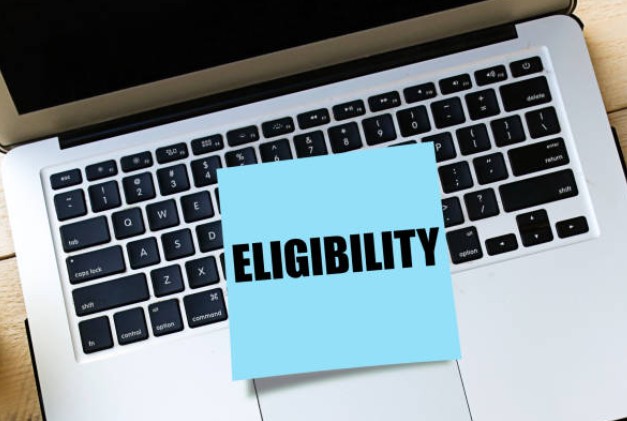When you’re unwell and unable to work, the last thing you want is financial uncertainty. Many UK employees ask a crucial question when sickness strikes: How much is Statutory Sick Pay?
This is a practical question with serious real-life consequences. Knowing your sick pay rights can make the difference between financial stability and sudden hardship. In this comprehensive guide, we break down exactly how Statutory Sick Pay works in the UK, how much you can expect, who qualifies, and what to do if you need more support.
What is Statutory Sick Pay in the UK?
Statutory Sick Pay (SSP) is the minimum amount an employer is legally required to pay employees when they are off work due to illness. It’s part of the UK’s employee rights framework, designed to provide some income protection if you can’t work because of health reasons.
Unlike company sick pay, which varies from one employer to another, Statutory Sick Pay is standard across the UK. It applies to most employees and is paid directly by your employer.
However, it’s important to understand that SSP is not a wage replacement. It’s a basic payment that is often significantly lower than your regular pay. Many people mistakenly believe they’ll receive full wages while off sick, but SSP only provides the legal minimum support.
Employers must follow the government rules when administering SSP, and employees must meet the qualifying conditions to receive it. This ensures fairness across all industries, but the low rate of SSP often leaves workers needing to explore additional support options.
How Much is Statutory Sick Pay in 2025?

Current SSP Rate:
As of April 2025, the Statutory Sick Pay rate is £123.55 per week. This rate applies whether you usually earn £200 or £1,000 per week. SSP is not linked to your salary — it’s a fixed amount set by the government.
Payment Details:
- SSP is paid on the same schedule as your usual wages (weekly or monthly).
- It is subject to deductions like Income Tax and National Insurance.
- SSP covers Monday to Sunday, regardless of whether you typically work weekends.
Duration of Payment:
- You can receive SSP for up to 28 weeks per illness.
- If you’re ill for longer than 28 weeks, SSP will stop, but you may be eligible for other benefits.
Financial Impact:
The SSP amount is low compared to the average UK salary, which often puts pressure on employees to seek additional financial support. If you have a mortgage, rent, or other significant expenses, SSP alone is unlikely to cover your regular outgoings.
Many employers offer occupational sick pay, which can supplement SSP, but not all are required to do so. This makes it essential to check your employment contract to see if your company offers more than the statutory minimum.
When Does Statutory Sick Pay Start?
Statutory Sick Pay does not start immediately from the first day you are off sick.
The SSP Start Timeline:
- SSP begins on your fourth qualifying day of sickness.
- The first three days are called “waiting days” and are usually unpaid.
- These waiting days apply only to your working days.
Exceptions:
- If you have been off sick for more than one linked period (within eight weeks), you may not need to wait the three days.
- Some employers voluntarily pay sick pay from day one, but this is not required by law.
- If you are off sick for reasons connected to a notifiable disease or certain exceptional circumstances, you may also qualify for payment from the first day.
Qualifying Days:
Qualifying days are the days you are normally scheduled to work. SSP is only calculated based on these qualifying days. If you don’t work weekends, your employer won’t count weekends as part of the calculation unless you were scheduled to work those days.
Who is Eligible for Statutory Sick Pay?
Not everyone automatically qualifies for SSP. There are specific eligibility rules that must be met.

SSP Eligibility Requirements:
- You must be legally classed as an employee.
- You must earn at least £123 per week (before tax).
- You must have been off sick for four consecutive days (including non-working days).
- You must properly notify your employer about your sickness absence in line with company policy.
Employees Who May Not Qualify:
- Self-employed workers are not entitled to SSP.
- Agency workers may qualify depending on their contract terms.
- If you are receiving maternity pay, you cannot also claim SSP.
- If you have already received the full 28 weeks of SSP, you won’t be entitled to further SSP for the same illness.
If you don’t qualify for SSP, your employer must give you an SSP1 form within seven days of your notification. This form will allow you to apply for Universal Credit, Employment and Support Allowance (ESA), or other government benefits.
How Long Can You Claim Statutory Sick Pay?
Statutorhttp://esay Sick Pay can be paid for up to 28 weeks for each sickness period.
Detailed Payment Duration:
- The 28 weeks apply whether your illness is continuous or made up of linked sickness periods.
- Linked sickness periods occur when you have multiple sick leave periods that are less than eight weeks apart.
- Once you reach the 28-week SSP limit, you will no longer receive SSP, and your employer should issue you an SSP1 form to help you access other financial support.
If your illness is long-term, you may need to explore Employment and Support Allowance (ESA) or Universal Credit to help cover your living expenses after SSP runs out.
What Happens After SSP Ends?
When SSP ends, you may:
- Apply for ESA, which provides ongoing financial support for people with limited ability to work.
- Check if your company offers long-term sickness benefits or enhanced pay schemes.
- Review whether you qualify for additional financial help, such as Personal Independence Payment (PIP) for serious health conditions.
How Do You Claim Statutory Sick Pay?
Claiming SSP is generally straightforward if you follow your employer’s procedure.
Step-by-Step Claim Process:
- Notify your employer as soon as you are ill. Each company has its own rules about how and when you should report sickness, so follow their guidelines carefully.
- For the first seven days of illness, you can self-certify your absence, meaning you don’t need a doctor’s note.
- If your sickness lasts more than seven calendar days, you must provide a fit note (sick note) from your GP or a hospital.
Once you have submitted the required information, your employer will calculate your SSP entitlement and include it in your regular payslip.
It’s essential to keep good records of your sickness reporting and ensure you provide all required documentation to avoid delays in receiving payments.
Do All Employers Have to Pay Statutory Sick Pay?

Yes, all UK employers are legally required to pay Statutory Sick Pay to eligible employees.
It doesn’t matter whether you work for a small shop, a large corporation, or a family-run business — if you qualify, your employer must pay SSP. There are no exemptions based on company size or sector.
However, since 2014, employers cannot reclaim SSP costs from the government. This means that the employer must fully fund SSP payments.
It’s worth noting that while employers must pay SSP, they are not obligated to offer any pay beyond the statutory minimum unless it is part of their contractual agreement or company policy.
Can You Receive More Than Statutory Sick Pay?
Yes, you can receive more than SSP if your employer offers occupational sick pay or enhanced sick pay.
What is Occupational Sick Pay?
Occupational sick pay is a voluntary scheme provided by some employers that offers higher payments than SSP, often close to or equal to your full salary for some time.
Key Features:
- Full pay for a specific number of weeks, followed by reduced pay.
- Varies by employer and may depend on your length of service.
- Usually outlined in your employment contract or staff handbook.
Some employers offer generous schemes where you could receive full pay for three to six months, while others stick strictly to the statutory minimum.
If you are unsure whether your employer offers occupational sick pay, ask your HR department or check your employment documents.
What Happens After Statutory Sick Pay Ends?
When your entitlement to SSP ends after 28 weeks, you will no longer receive payments from your employer unless you qualify for company sick pay.
Next Steps:
- Your employer should issue you an SSP1 form, which confirms the end of SSP payments.
- You may need to apply for Employment and Support Allowance (ESA) for long-term illness.
- You can also explore Universal Credit if your income is significantly reduced.
It’s crucial to apply for further financial support in advance to avoid gaps in your income.
Some people also consider claiming Personal Independence Payment (PIP) if their illness leads to long-term disability or care needs.
Planning ahead for what happens after SSP ends can help you manage your financial situation and access all available support.
What if You Are Not Eligible for Statutory Sick Pay?
If you are not eligible for SSP, you are not left without options.
Alternative Support Options:
- Universal Credit: May provide income support if you are on a low income or out of work.
- Employment and Support Allowance (ESA): Offers financial help if your illness affects your ability to work.
- Income Protection Insurance: If you have private income protection, you may be able to claim while off sick.
- New Style Jobseeker’s Allowance (JSA): Available in some cases if you are not working but are capable of job searching.
If your employer says you are not eligible for SSP, they must give you an SSP1 form, which will allow you to apply for these alternative benefits.
Final Thoughts: How Much is Statutory Sick Pay and What Should You Do?
Understanding how much is Statutory Sick Pay is crucial for all UK employees. SSP provides basic financial protection if you’re too ill to work, but it often falls far short of replacing your usual income.
To protect yourself:
- Check your employment contract to see if you’re entitled to more than SSP.
- Consider private insurance or building emergency savings.
- Know your rights and prepare for what happens after SSP ends.
Being informed allows you to take proactive steps and avoid financial shocks when you’re already facing health challenges.






